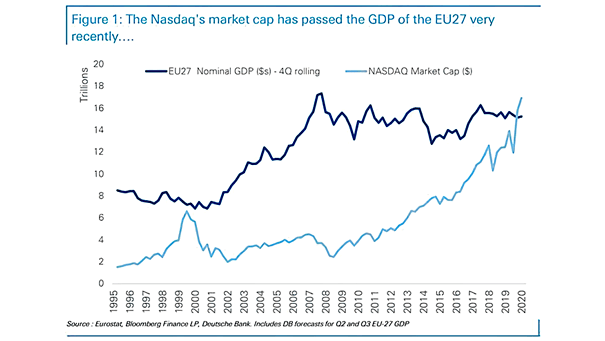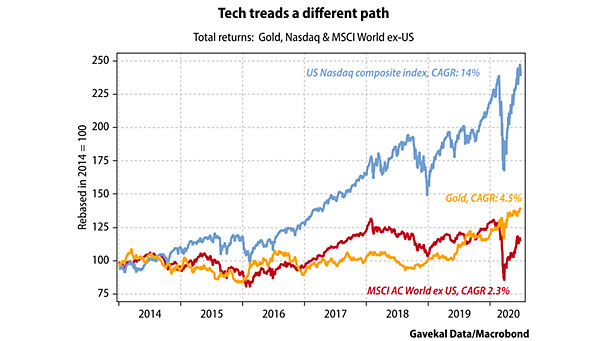EU27 Nominal GDP vs. Nasdaq Market Capitalization
EU27 Nominal GDP vs. Nasdaq Market Capitalization Is tech in a bubble? The Nasdaq market capitalization is now bigger than the nominal GDP (in U.S. dollars) of the European Union’s 27 member countries. Image: Deutsche Bank


